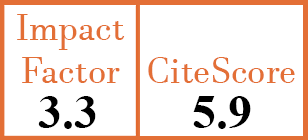Full Papers
Bronchial artery enlargement may be the cause of recurrent haemoptysis in Behçet’s syndrome patients with pulmonary artery involvement during follow-up
S.N. Esatoglu1, E. Seyahi2, S. Ugurlu3, F. Gulsen4, C. Akman5, M. Cantasdemir6, F. Numan7, H. Tuzun8, M. Melikoglu9, H. Yazici10, V. Hamuryudan11
- Department of Internal Medicine, Division of Rheumatology, Istanbul University, Cerrahpasa Medical School, Istanbul, Turkey.
- Department of Internal Medicine, Division of Rheumatology, Istanbul University, Cerrahpasa Medical School, Istanbul, Turkey.
- Department of Internal Medicine, Division of Rheumatology, Istanbul University, Cerrahpasa Medical School, Istanbul, Turkey.
- Department of Radiology, Istanbul University, Cerrahpasa Medical Faculty, Istanbul, Turkey.
- Department of Radiology, Istanbul University, Cerrahpasa Medical Faculty, Istanbul, Turkey.
- Department of Radiology, Istanbul University, Cerrahpasa Medical Faculty, Istanbul, Turkey.
- Department of Radiology, Istanbul University, Cerrahpasa Medical Faculty, Istanbul, Turkey.
- Department of Cardiovascular Surgery, Istanbul University, Cerrahpasa Medical Faculty, Istanbul, Turkey.
- Department of Internal Medicine, Division of Rheumatology, Istanbul University, Cerrahpasa Medical School, Istanbul, Turkey.
- Department of Internal Medicine, Division of Rheumatology, Istanbul University, Cerrahpasa Medical School, Istanbul, Turkey.
- Department of Internal Medicine, Division of Rheumatology, Istanbul University, Cerrahpasa Medical School, Istanbul, Turkey. vhamuryudan@yahoo.com
CER9466
2016 Vol.34, N°6 ,Suppl.102
PI 0092, PF 0096
Full Papers
Free to view
(click on article PDF icon to read the article)
PMID: 27791952 [PubMed]
Received: 30/03/2016
Accepted : 01/07/2016
In Press: 11/10/2016
Published: 25/10/2016
Abstract
OBJECTIVES:
Haemoptysis occurring in a Behçet’s syndrome (BS) patient with pulmonary artery involvement (PAI) during follow-up is usually regarded as PAI relapse. However, bronchial artery enlargement (BAE) may be the source of haemoptysis in some patients.
METHODS:
A chart review at the end of December 2014 revealed 118 patients with PAI in our centre since 1979. Nine (all men) had recurrent haemoptysis during follow-up which could not be explained with relapse of PAI.
RESULTS:
Haemoptysis recurred a median of 1.5 years (IQR: 9 months-5 years) during follow-up. Thorax CT scans did not show relapse of PAI or emergence of BAE. The patients were treated empirically but continued to complain of occasional haemoptysis thereafter. BAE was detected in 8 patients after a median follow-up of 9 years (IQR: 5-12 years). Six patients underwent bronchial artery embolisation that was repeated in 3. One patient with severe pulmonary hypertension died 3 weeks later. The remaining 5 are under follow-up for between 5 months-9 years. Pulmonary infarction and mild hemiparesis occurred in 2 patients after embolisation. One patient died with haemoptysis before undergoing embolisation. Another one with small BAE is under follow-up for 8 years without embolisation. The source of bleeding could not be determined in 1 patient who is now haemoptysis free for 5 years.
CONCLUSIONS:
BAE may be the source of recurring and fatal haemoptysis in BS patients with PAI during follow-up. Embolisation appears to be a life-saving procedure.


